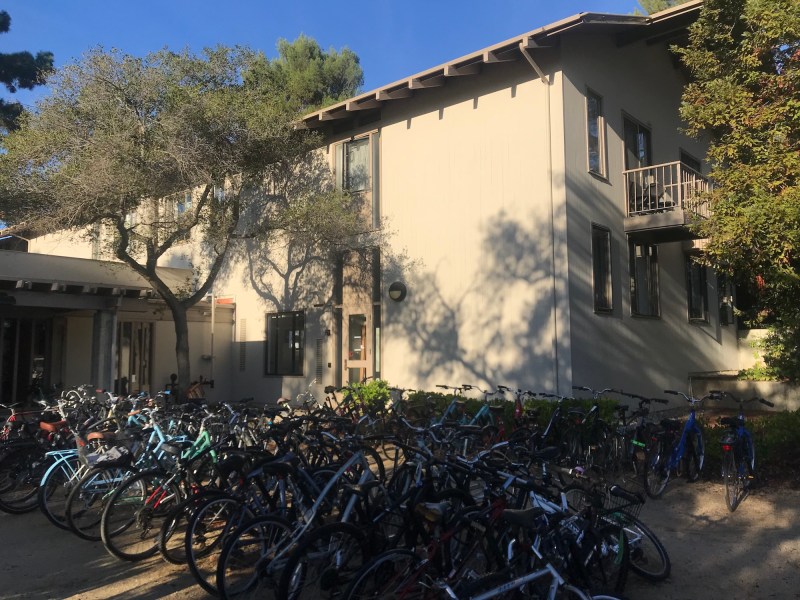In the past 48 hours, students on campus have faced an agonizing decision: Should they remain on campus, where life as they know it takes place, or should they go home? Many students — especially graduating seniors who had been keenly anticipating their last quarter — are scrambling to figure out their plans for the rest of the academic year. And as Bryce Tuttle ’20 pointed out in his op-ed yesterday, many, asked to leave campus if they can, are choosing to remain on campus.
We are in the midst of a worldwide crisis. We sympathize with students who are reluctant to leave, but we urge those who have the option of returning home and who are currently remaining on campus for spring quarter to revisit their decision. At this juncture, all students should reflect on their motivation to stay: Is this decision motivated by legitimate needs, or is it driven by a desire to minimize a sense of loss?
We applaud Stanford’s decision to keep residences open for those who cannot return home, in contrast to other schools that have forced evacuations of all students from their campuses. But the cooperation of both those staying and those leaving is crucial if the administration’s effort to protect its on-campus populations is to succeed. If we all elected to stay, Stanford’s current policy of keeping residences open for those who truly need to be here would not be viable.
We recognize that the administration’s rollout of its decision was sudden and has led to anxiety about next steps for students, who were given just two days to determine their plans for next quarter. The limited time frame has placed pressure on students to quickly develop logistically complex plans. This is particularly unfair to students who may, for financial reasons, need to work if they go home, and may be unable to find employment due to an unclear timeline. If the administration had given students more time to figure out spring quarter plans and provided more clarity on the general timeline of the situation, more students might have been able and willing to comply with the request that undergraduates leave campus.
Though Stanford’s response has not been perfect, neither has the University been standing idly by. The administration has assembled a cross-campus emergency operations team of professional experts who are dedicated to devising a sensible response to the unfolding crisis. As of Thursday night, there are nearly 200 confirmed cases in California, but only three at Stanford. For now, barring exceptional circumstances, it is safe and prudent for many students to travel back home, diffusing the risk of COVID-19’s transmission on campus and abroad. We reiterate what President Marc Tessier-Lavigne stated in his email on Tuesday:
“reducing the concentration of people in [student residences] is essential to helping reduce the risk of virus spread during this next critical phase of COVID-19’s evolution. As such, we are asking undergraduates to leave campus at the end of the quarter if it is possible for them given their personal circumstances.”
It is time for the undergraduate student body to face a stark reality: For the foreseeable future, this spring quarter will not be normal. All those enrolled in spring quarter will conduct their academic coursework virtually; other in-person programming will also be limited.
What this means is twofold:
First, undergraduates should carefully consider, for the health and safety of the community, if they really need to be on campus. There are many valid reasons, from specific obligations to the campus community to financial difficulties to academic or personal circumstances. We do not mean to discount these; we simply urge students to critically examine their reasons.
Second, those who do stay must be doubly responsible residents of Stanford, taking seriously hygienic recommendations and social distancing, minimizing or eliminating trips to the surrounding area, and avoiding any activities that risk the spread of the disease. Moreover, with few exceptions, those who have already left campus should not return.
Experts do not always get things right, but few if any undergraduates can claim to rival the expertise that is direly needed to confront this pandemic. With the number of coronavirus cases increasing by the day in Santa Clara County, now is the time to place our trust in the administration’s guidance.
The Vol. 257 Editorial Board consists of Claire Dinshaw ’21, Malavika Kannan ’23, Layo Laniyan ’22, Adrian Liu ’20, Jasmine Liu ’20 and Willoughby Winograd ’22.
Contact the Vol. 257 Editorial Board at opinions ‘at’ stanforddaily.com.
